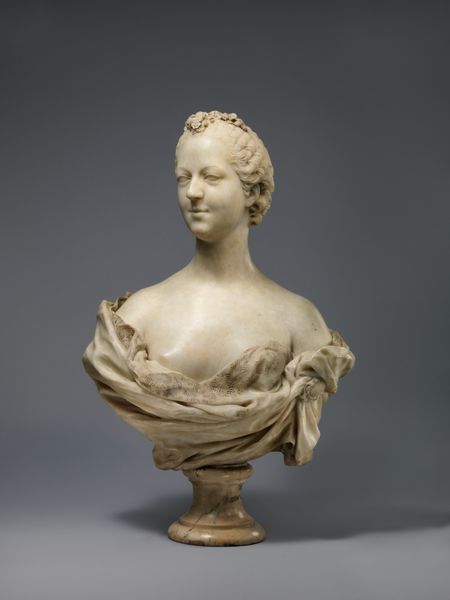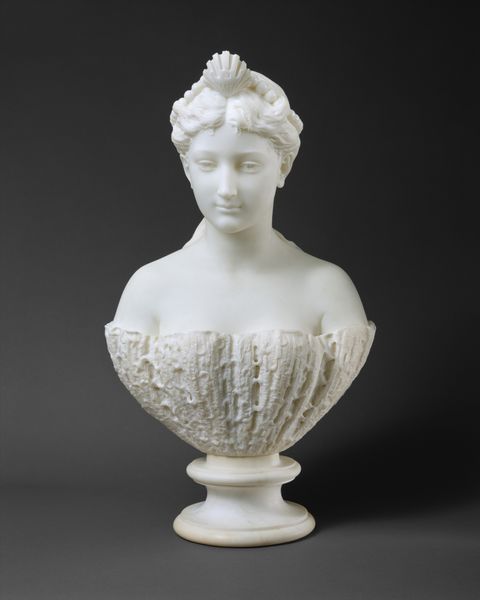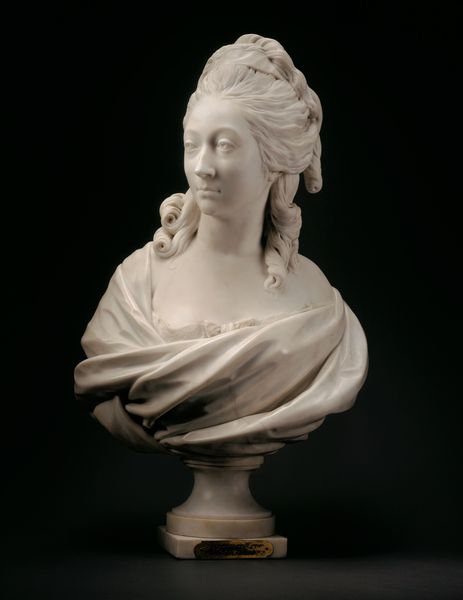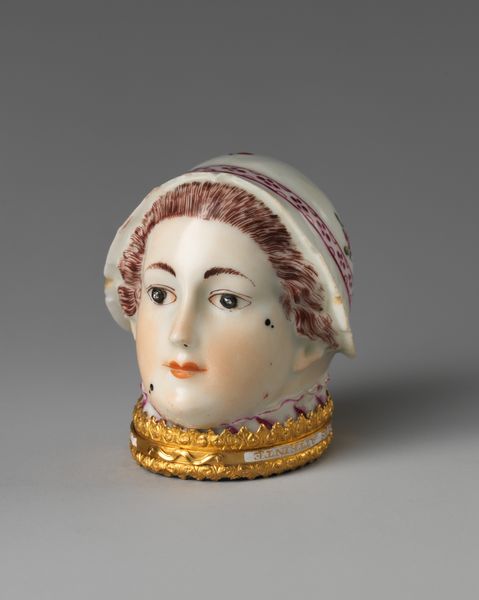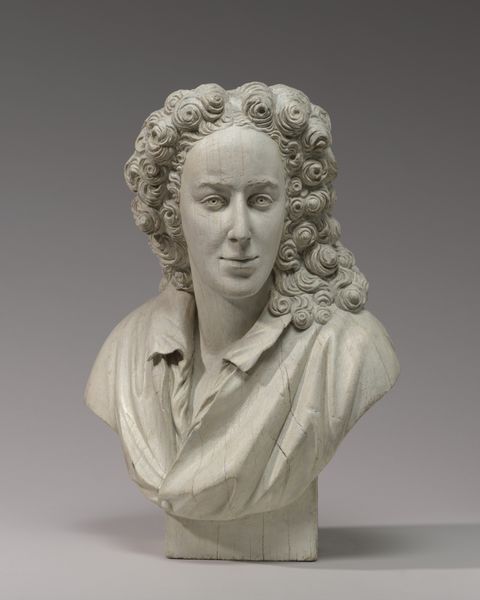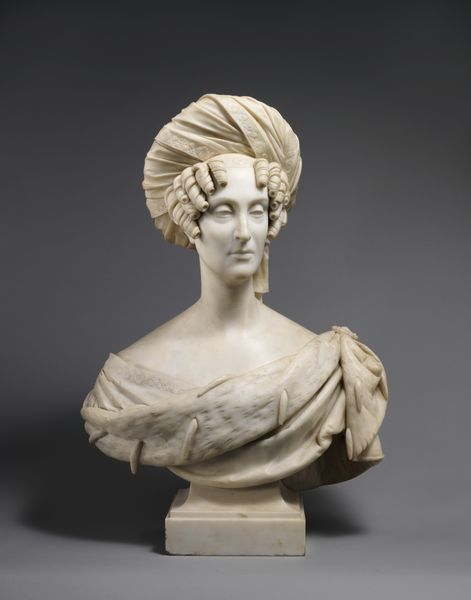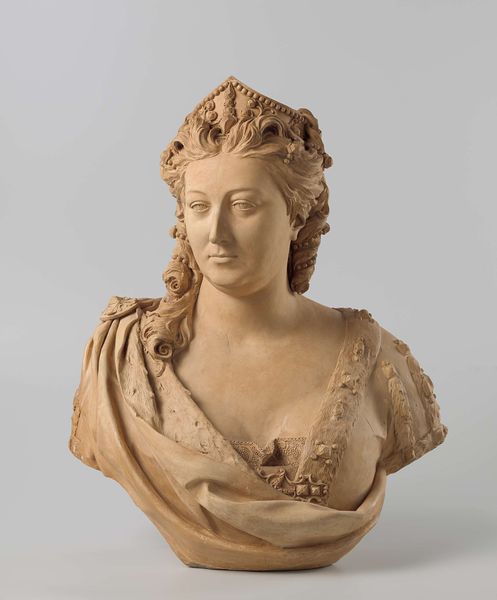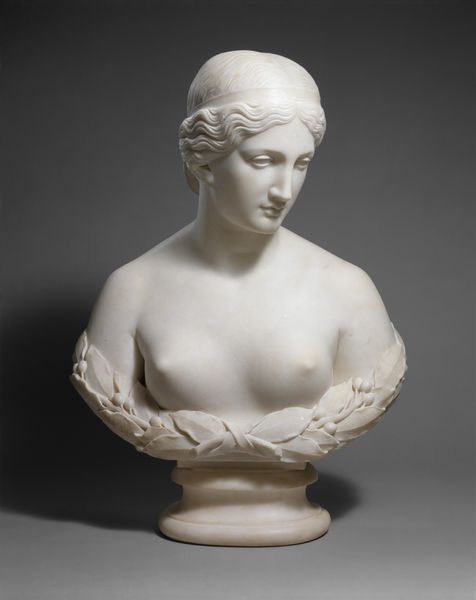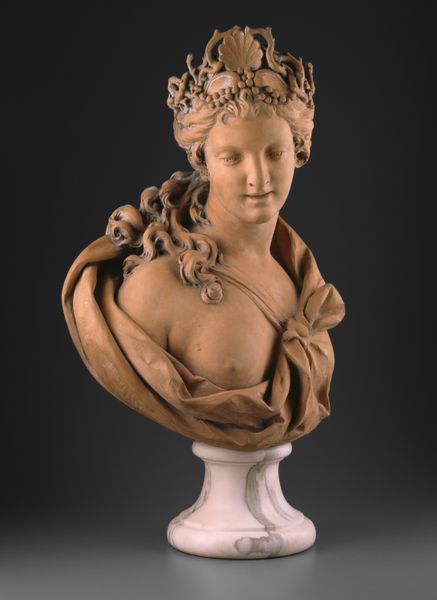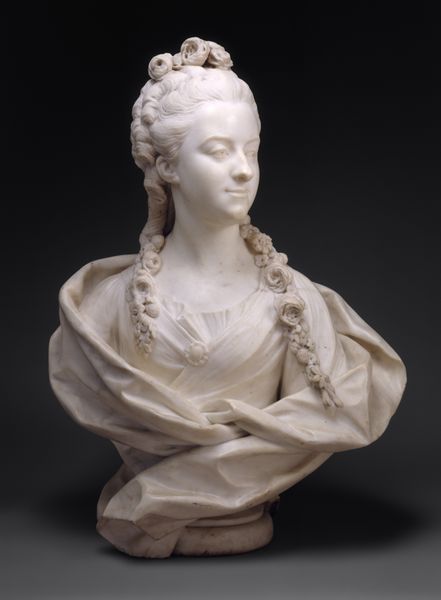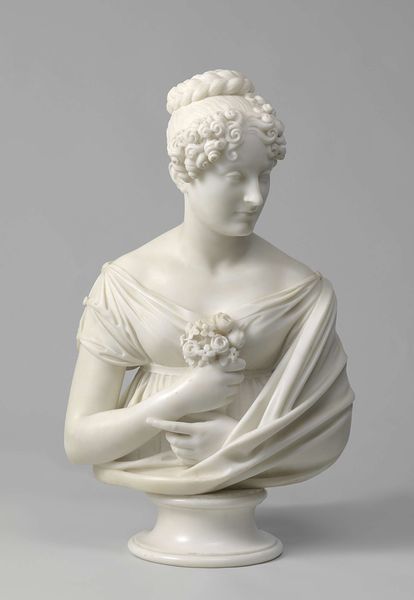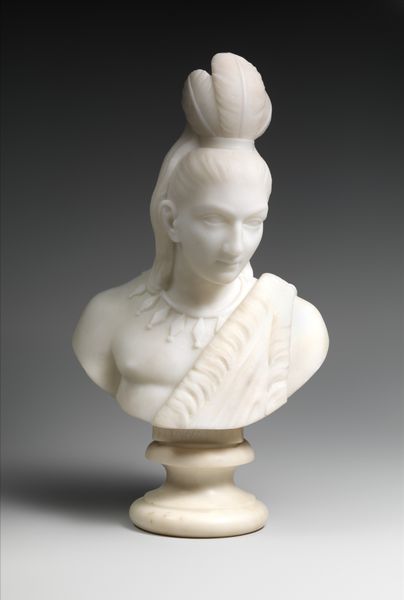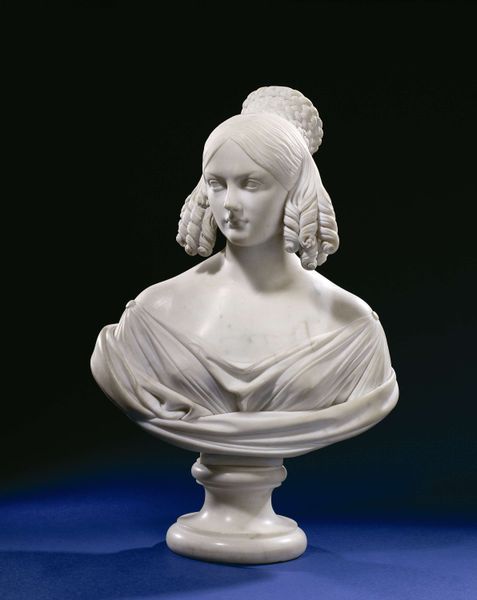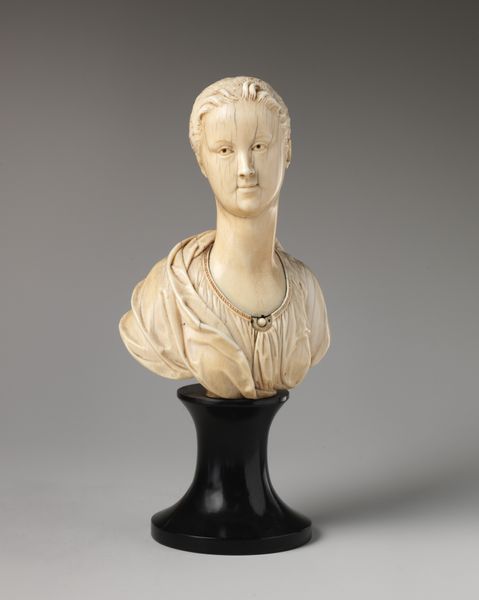
carving, sculpture, marble
#
portrait
#
neoclacissism
#
carving
#
sculpture
#
sculpture
#
decorative-art
#
marble
Dimensions: confirmed: 21 5/8 × 12 7/8 × 8 in., 31.2 lb. (55 × 32.7 × 20.3 cm, 14.2 kg)
Copyright: Public Domain
Editor: This marble bust of Queen Elizabeth I, made between 1775 and 1785 by John Bacon the Elder, is incredibly detailed. I’m struck by how the rigid ruff contrasts with the softness of her face. How should we read the artist's material choices? Curator: It’s important to remember this wasn't Bacon meeting Queen Elizabeth; he lived much later. So, consider the materials themselves – marble, often associated with permanence and power, being used in the late 18th century to revive an earlier era. The choice wasn't accidental; it signifies a dialogue with the past, almost a commodity fetish, wouldn't you agree? What was marble signalling to the patron? Editor: So, the marble isn't just about status; it’s about looking back and manufacturing a specific kind of historical association. Almost like a Neoclassical branding. Curator: Exactly. The carving and production, in this context, point to something about 18th century's preoccupation with both reviving and reshaping history for its own social and political purposes. How do the clean, sharp lines speak to that goal of control? Editor: It's interesting how the material—marble—and the labor required to shape it are so central to understanding the work's meaning. The sculpture is literally constructed out of power and meaning. Curator: Precisely! And in its display of this particular monarch in that era... How does considering it as an object made for consumption affect your understanding? Editor: It shifts my focus from simply admiring a portrait to considering the complex networks of meaning surrounding its production, display, and intended audience. Thinking materially offers such richer possibilities! Curator: It does. I appreciate how you saw the material presence so astutely today, focusing on process and the social context behind this arresting work.
Comments
No comments
Be the first to comment and join the conversation on the ultimate creative platform.
